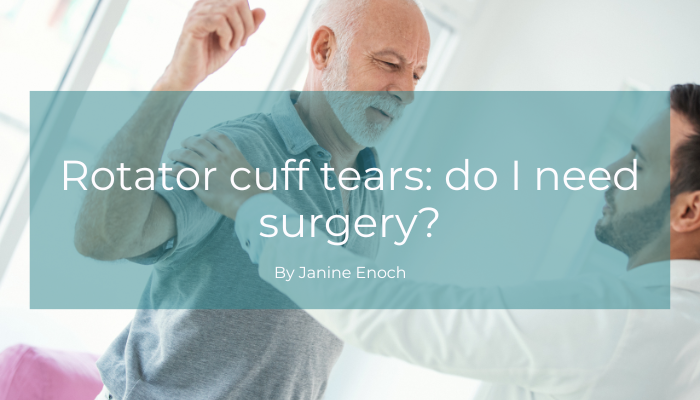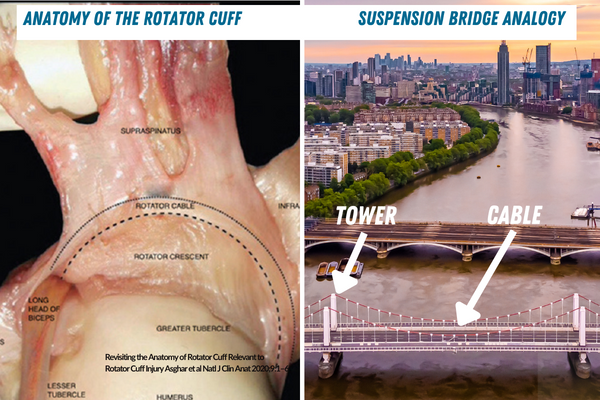SLAP Tears

Did you know that small changes in the position of the clavicle, scapula, and spine all help move the shoulder? The shoulder is able to perform all these brilliant movements mostly because of its shape, but also because it’s supported by those other joints too. The accessory joints (between the clavicle, scapula, and spine ) allow us to create these complex movements. They also make these movements more stable and more powerful too! There are 7 movements that occur in the shoulder: abduction (away from the body), adduction (across the body), internal rotation, external rotation, flexion (upwards), extension (backward), and circumduction (a combination of all the above).
Taxing your shoulder over time with repetitive, overhead movements or participating in contact sports may put your shoulder at risk for injury. Many athletes endure micro-traumatic stresses on the shoulder which can be both unpleasant and painful too! Significant damage happens these injuries are left without being treated.
Is a SLAP tear similar to a rotator cuff tear?
A SLAP tear is not to be confused with a rotator cuff tear. A rotator cuff tear involves a tear to a rotator cuff muscle/tendon. A SLAP tear refers to a tear of the labrum – which is a thick piece of cartilage that lines the shoulder joint. In most cases, there is also damage to the bicep tendon that attaches to the labrum. Sometimes SLAP tears are confused with AC Joint problems. One of the key differences is that in SLAP tears, you’ll have pain when your bicep muscle works eccentrically (like going down on a bench press).
What is a SLAP tear?
This is a tear to the ring of cartilage (labrum) that surrounds your shoulder’s socket. A SLAP tear tends to develop over time from repetitive, overhead motions, such as throwing a baseball, playing tennis or volleyball, or swimming. Usually, you’ll have pain at the top of the shoulder, clicking, and pain with those overhead activities. If you’ve had a SLAP tear your:
Athletic performance decreases. You have less power in your shoulder, and your shoulder feels like it could “pop out.
Range of motion decreases. You may not feel able to throw or lift an object overhead like you used to, as your range of motion decreases.
Shoulder hurts and you can’t pinpoint the pain. You have a deep, achy pain in your shoulder, but you can’t pinpoint the exact location.
There are 4 types of SLAP tears:
Type I SLAP lesions have been described as isolated fraying of the superior labrum with a firm attachment of the labrum to the glenoid. These types of SLAP tears are typically due to degenerative changes. It has been suggested that the majority of the population has some variation of a Type 1 SLAP lesion. These often present with no symptoms and are no cause for concern.
Type II SLAP lesions are defined by a detachment of the superior labrum and the origin of the tendon of the long head of the biceps brachii from the glenoid cavity. This can often cause instability in the shoulder. This is the most common type of SLAP tear and often needs surgery for repair.
Type III SLAP lesions are tears in the shape of a bucket-handle. The labrum peels back, with no damage to the long head of bicep tendon.
Type IV SLAP lesions are a combination of Type II and Type III tears. This involves a bucket handle tear to the labrum, which extends into the bicep tendon. This type of tear often causes instability in the shoulder and the long head of the bicep.
Do all SLAP tears heal on their own?
Unfortunately, SLAP tears do not heal on their own. Sometimes surgery is the best option, depending largely on the type of SLAP tear. If a SLAP tear is left untreated, the shoulder can become unstable, leading to dislocation. Reduced range of motion, chronic pain, and adhesive capsulitis (frozen shoulder) are also common. Discuss this with your trusted healthcare provider after a thorough assessment of the injury, and what the best option is for you. A good clinician will always be able to advise about the advantages and disadvantages of the treatment options.
What does conservative management look like?
Exercises that develop strong control of the rotation in the shoulder are very important. They help ultimately to manage the load placed on the upper labrum (superior labrum), relieve pain, and help overhead athletes move their arms more efficiently. Watch me show you my favourite SLAP tear exercises!





